The fascinating story of the South Shore Romany Gypsies: culture, history, and Blackpool Pleasure Beach
and live on Freeview channel 276
Sarah Petulengro’s booth on Blackpool Pleasure Beach may be the last vestige of Romany Gypsy heritage in South Shore. It’s a history that stretches back to the mid 1800s when her ancestors pitched their tent on sands no one else had deemed habitable. Antonia Charlesworth Stack heads out to find out more about that history.
“It was a harsh life but it would have been something they were used to,” Petulengro tells The Blackpool Lead. “They had holes in the middle of the tents to make fires and I often think about how they coped.”
Advertisement
Hide AdAdvertisement
Hide Ad“We do not fear rain nor feel frost,” explained Sarah Boswell to the socialist newspaper the Clarion in 1894. She and her husband Ned were some of the first known Romany people to come to Blackpool. “The weather is not so inclement here as inland. The wind, though, is rough at times, and we have had our tent blown into ribbons.”
The Boswells made South Shore their home – their descendants becoming sandgrown’uns in the truest sense. Their nephew, Trafalgar, raised 14 children on the sands and many other families would do the same. South Shore became home to a thriving community of Romany people who lived there year round, with many others travelling to join them for the summer months. By the late 1800s they were one of Blackpool’s main attractions.
Alan Robinson is one of many Blackpool residents whose ancestors lived on the sands.
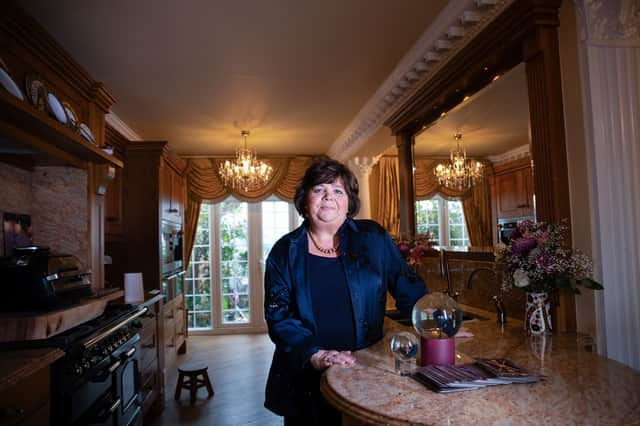

“The whole family lived there,” he says. “My grandad, Goney Robinson, operated bathing machines. My aunt, Mabel Robinson, told fortunes. Even into her 70s she worked on Central and North Pier where she was known as Madam Lovel.”
Advertisement
Hide AdAdvertisement
Hide AdPrior to settling on the sands the Robinsons had been nomadic.
“Most of the family had been born on the road. Almost all of them behind pubs when the landlords had allowed them to stay. Not one of the original Robinsons were born in the same town,” he says.
But by 1910 the community had gone. The new Pleasure Beach amusement park as well as the wider development of South Shore – something they had been instrumental in – meant the land the Romany had settled on had become lucrative. Their lives were increasingly regulated, sanctioned, criminalised and, ultimately, they were evicted.
“The fact that they were removed from an iconic place in British culture tells you everything you need to know about the 500-year-long painful history between the British state and the Gypsy population,” says Romany journalist, campaigner and blacksmith Jake Bowers.
Advertisement
Hide AdAdvertisement
Hide Ad“The British state has never seen us as part of its cultural make up. We’ve always been foreign to it and unwanted. If you go all the way back to the Egyptians Act in the time of Henry VIII, it was a hanging offence to be who I am. Removing them from that beach is symbolic of 1,000 different stories you find across the British landscape.”
Across Europe, cultural and academic institutions and governments are seeking ways to acknowledge and redress harm and right their historical wrongs. Should Blackpool’s tourism and heritage industry be doing more to recognise that it profited from and persecuted the South Shore Gypsies?
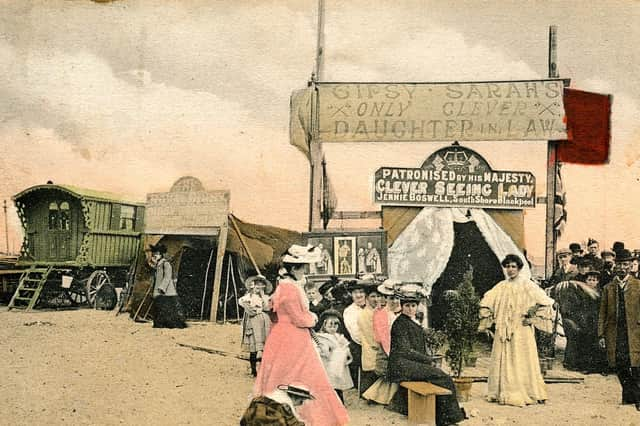

“It would be nice to have some acknowledgement in Blackpool that Gypsies had been such an important part of the history and economic growth of the town,” says Sharon Heppell, founder of the Romany & Traveller Family History Society. Her Romany ancestors, the Smiths, had been travelling the UK and Ireland hosting dances prior to setting up camp in South Shore in the early 1870s.
“They saw the potential for earning a living in Blackpool. It was at a time before the streets were built, the land wasn’t fit for building on, so they were separate and I think they were seen as an asset to the town.”
Advertisement
Hide AdAdvertisement
Hide AdAs well as the Boswells, Smiths and Robinsons, families included the Coopers, Townsends, Lees and Youngs. All were related by marriage or association. Petulengro – whose name evolved later as the Romany translation for Smith – believes she descends from not just that family but the Boswells as well.
“When I look and see Sarah Boswell I always think, is that my great great granny? But nobody knew by the time I wanted to know,” she says. But Petulengro continues what Sarah Boswell started – using the ancient practice of palmistry and clairvoyance to delight Blackpool tourists keen to know their fortunes.
A small fair emerged in South Shore with a miniature railway that would transport visitors around the encampment to a station called Gipsyville. Photographs from the early 1900s show crowds of visitors queuing to enter the camp’s tents.
“Before they even saw the Tower or the Winter Gardens, tourists would head to South Shore to see the Gypsies,” says Heppell. “They were just as important an attraction in the town. As well as telling fortunes they were selling crafts they made, so in those days Blackpool was quite keen to preserve them because they were such a draw.”
Advertisement
Hide AdAdvertisement
Hide AdFor decades Blackpool largely offered refuge to the Romany, whose fortune telling trade had been criminalised by the Witchcraft acts and the 1824 Vagrancy Act. As an asset to the town, on the sands they were given a degree of legitimacy – they paid rents and taxes to openly practise but formally offered advice for free if a customer purchased a small basket for 6d or a shilling.
The tide began to turn against them as South Shore grew. Town planners saw the area as an upmarket alternative to lively central and north Blackpool and its new classy pier reflected this when it opened in 1893. The villas and substantial houses built on surrounding roads housed the professional classes who began to complain about the “hurdy-gurdy” from the summer fairs.
“What harm do we cause anyone here?” one Romany resident asked a Gazette reporter in 1893. “We pay the farmer a heavy rent for occupation of this land… Why should we forsake the land we have occupied for the summers of so many years?”
“Then new sanitation by-laws began impacting on the Gypsies too,” says Heppell. “There were things that they couldn’t meet in terms of water supply and waste disposal.”
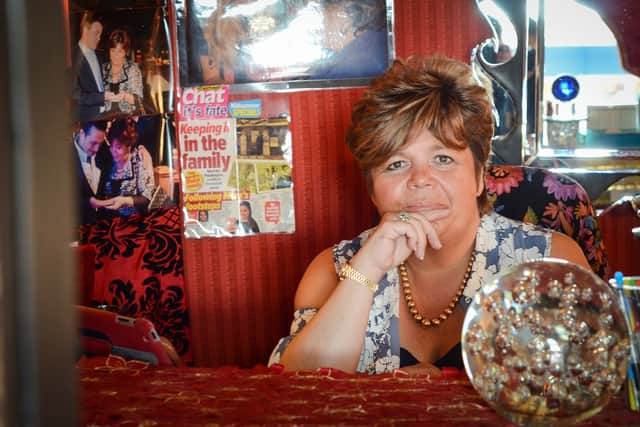

Advertisement
Hide AdAdvertisement
Hide AdMeanwhile, the South Shore sands had expanded to include an array of other fairground attractions – operated not just by the Romany. In 1895 John Outhwaite began running an American Roundabout and the following year William Bean installed a Bicycle Railway. The same year the pair joined forces and bought a stretch of unused land nearby with a view to building their own amusement park. Their vision was to create the UK’s own Coney Island.
By 1904 their dream was beginning to be realised. They purchased 40 acres of land from the Watson Estate at a cost of £35,000 and installed their first permanent ride – Sir Hiram Maxim’s Captive Flying Machine, which still stands today as not just the oldest ride in Blackpool Pleasure Beach, but in the whole of Europe.
“In the early days of the Pleasure Beach the owners were the Gypsies’ landlords so they were paying rent for the space they were occupying,” explains Heppell.
“They were very friendly with William Bean. I know they thought he was a very nice man,” adds Petulengro who says the Pleasure Beach, now operated by Amanda Thompson, the great-granddaughter of William Bean, has continued to be supportive of her practice there today.
Advertisement
Hide AdAdvertisement
Hide AdBut as the Pleasure Beach expanded, there was less room for the Romany. By 1908 they were being priced out with high rents from both the amusement park and the surrounding sands where their camp stood in the way of further land sales. By this time Bean sat as a town councillor.
Authorities began to call on the powers they had largely ignored for decades and in 1907 introduced a bye-law further prohibiting fortune telling. In April 1909 four Romany women including 15-year-old Clara Boswell and 80-year-old Regenda Townsend were charged with pretending to tell fortunes on South Shore after officers had posed as customers. They were fined 10 shillings each and ordered not to practice their trade.
“Of course they gave the promise readily enough, and as readily forgot it as soon as the holiday season began,” one paper reported at the time. “How else could they pay the large rents that councillor Bean and other excellent gentlemen demanded for their pitches?”
A new “method of attack” was then employed, according to the report, and the council passed a resolution requesting no South Shore land owners to allow new encampments and to give present tenants notice.
Advertisement
Hide AdAdvertisement
Hide AdThe community was not without public support. In April 1908 one South Shore resident wrote to the Lancashire Daily Post to draw attention to the “means being adopted” to evict them “without reason”.
“They have formed one of the greatest and most picturesque attractions to South Shore… They have earned, spent, attracted and induced others to spend more money than any other one class of people in Blackpool.
“Though they are not obnoxious to their landlord or the public, though they are sober, respectable citizens of long standing and no nuisance, the Corporation would evict them from their ancient tents.”
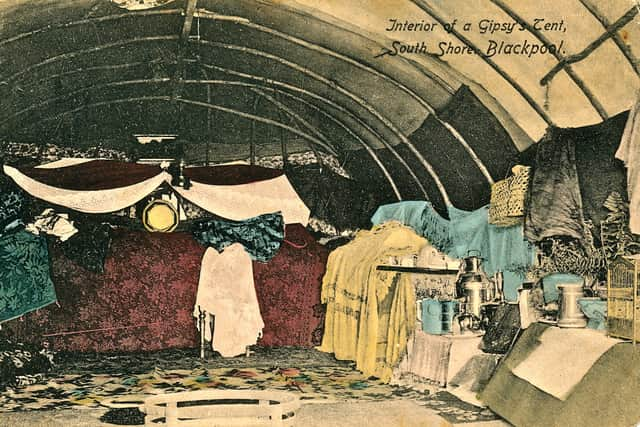

By March 1909 many had left but some held fast – namely the Boswell descendants who sought an exemption because they were born on the sands. In the November, one South Shore fortune-teller, Eva Franklin, sought help from King Edward VII, writing to him about their plight.
Advertisement
Hide AdAdvertisement
Hide Ad“We have been resident here for the past forty years, and have always been encamped on one plot of ground,” wrote Franklin, who Heppell describes as a feisty and articulate woman – the half sister of her great-great-grandmother, Lementeni Smith.
“We all pay £20 to £25 for the season, and also pay rates and taxes. Our tents were the first things on the show ground, and now they want to get rid of us…
“It is very hard for us all. It is driving us from our homes after being here for so many years. Most of our children have been born, christened, and educated here… We are English Gipsies, and we look to our King for justice.”
But by February 1910 they were defeated when Blackpool magistrates granted an ejectment order to the last of the South Shore Romany, 54-year-old Alma Boswell, who had lived on the same plot of land his whole life.
Advertisement
Hide AdAdvertisement
Hide AdOver the years Boswell, son of Sarah and Ned, had complied, “at great expense”, with requests to fence his quarters and install water. It was stated that he had been a good tenant but the bench saw no alternative. His removal, he said, would come at great personal loss. The Boswells’ generations-long encampment in Blackpool was over. As University of Liverpool academic Tamara West points out, they had been central to the growth and founding myths of Blackpool, and simultaneously marginalised from it.


“They had been there for generations and it was all they knew,” says Petulengro. “It was a shame what happened and I wouldn’t like it if it happened to me… It’s right there should be recognition of them.”
In its promotional material around its 125th anniversary in 2021, despite Romany tents being clearly visible in early images used, the Pleasure Beach makes no reference to the South Shore Gypsies, who journalist Sidney Moorhouse referred to as the real “founders of the Pleasure Beach” in his 1950s guide to Blackpool. When asked if it recognised the Romany contribution to the development of the Pleasure Beach and if it would consider honouring that heritage, the Pleasure Beach said it is unable to comment, a response Bowers said is “burying their heads in their own sand”.
Councillor Jo Farrell, Cabinet Member for Levelling Up People at Blackpool Council, acknowledges the Romany Gypsies’ “long history in Blackpool”
Advertisement
Hide AdAdvertisement
Hide Ad“Descendants of Blackpool's first Gypsies still live here to this day and continue to work on a number of the town’s attractions including the piers and on the promenade,” she says. “Their important role in the history of the town will be acknowledged and showcased in the new Showtown museum.”
The new museum of entertainment heritage, on the Golden Mile in central Blackpool, is set to open next month. While there is no acknowledgement of persecution of the Romany community within its displays, they do document its role in the town's success as a holiday destination. Sarah Boswell and Sarah Petulengro both feature. During lockdown the museum also hosted an online interview with Sharon Heppell who spoke about her South Shore ancestors. She and Petulengro both agree this inclusion in the museum is a step towards the recognition their ancestors deserve.
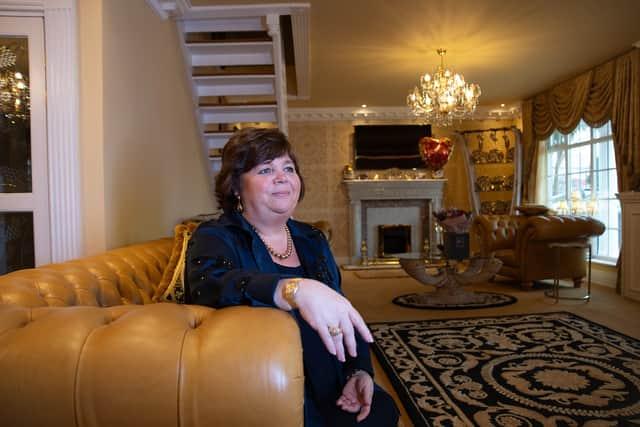

Bowers feels they should be represented in a more permanent and visible way in South Shore. As a blacksmith, an ancient Romany trade, he has been making sculptures of elements of Romany history to be reinserted back into the landscape. He was inspired by the toppling of the statue commemorating an 18th Century slave trader by Black Lives Matter protesters in Bristol, which provoked national conversations about power, inequality and persecution in our cultural heritage.
“The very least Blackpool should be doing is recognising the historical human geography of the sands in terms of putting Gypsy history on the map in a permanent and recognisable way, so that people can recognise that’s where some of us used to stop,” says Bowers.
Advertisement
Hide AdAdvertisement
Hide AdHe says there are organisations doing good work such as the University of Liverpool, Surrey History Centre, Surrey Historic Environment Record and Bourne Hall museum, where the Romany heritage of the Epsom Derby has been celebrated. Heppell points to physical monuments – a blue plaque in Wardley Street, Wandsworth, a stone monument at what was the Black Patch encampment in Birmingham, and history information boards on the sites of two long-standing encampments in Poole and Bournemouth.
“It generally comes down to enlightened people working in certain areas,” says Bowers. “So you get points of light but then you get enormous swathes of darkness where there is no reference to Gypsy history at all.”
Alan Robinson agrees that a memorial to his ancestors would be a fitting tribute.
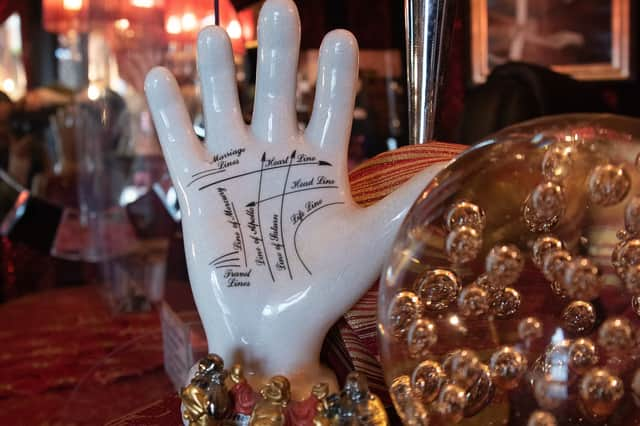

“The Gypsy camp was the start of the Pleasure Beach but money and greed came into it,” he says. “The locals with money did not like that the Gypsies were taking money they could have. It would be nice to have some sort of memorial to what they did but in these times I would not want a lot spending. The poor need it more in Blackpool.”
Advertisement
Hide AdAdvertisement
Hide AdBowers adds that in order to address past persecution we must also address how it presents itself in the present.
“At best they should, where possible, create accommodation for living Gypsies and Travellers next to the place where our ancestors used to live.” He recognises that might not be possible near the Pleasure Beach but says, just as removing them was, “it’s all a matter of political will”.
Blackpool has four legal sites for the Gypsy, Roma and Traveller community (GRT) to stop on – at Whalley Lane, Jubilee Lane, Fishers Lane and Chapel Road – all in Blackpool South and two-to-three miles inland from the Pleasure Beach. One is council-operated and has 26 pitches, all fully occupied. One is operated by Petulengro’s father in law.
“They have made a few camps and it’s not as bad as it used to be, it used to be very bad,” she says. “There are about 20-25 vans on there and about 10 families. For travelling Romany it’s harder.”
Advertisement
Hide AdAdvertisement
Hide AdA 2019 GRT Accommodation Assessment identified the need for just two additional pitches in Blackpool. Blackpool Council provided three. But unauthorised camps still regularly crop up on the Fylde Coast.
“In the summer my father in law does find it hard to find space for people and he does turn a lot of people away,” says Petulengro. “It's harder now to pull on land. I don’t agree that they should pull on public land and I can understand them being moved off, but there are places they should be able to go where they’re not interfering with people. As long as they tidy up after themselves then it shouldn’t be a problem.”
In 2015 Blackpool Council used what it was said was the first High Court injunction to ban Travellers from seven parcels of land, including a car park in South Shore, after 240 people and 80 caravans had occupied them. In the past five years formal action has been taken against unauthorised camps by the council 18 times.
Nationally, powers to remove GRT communities from land were strengthened in 2022 when the Police, Crime and Sentencing in Court Act was broadened to give police the power to arrest them and seize their vehicles, with maximum penalties of three months in prison and £2,500 fines. In May 2023 Blackpool North MP Paul Maynard called on police and the council to use the new powers to remove people from land near Fleetwood Road.
Advertisement
Hide AdAdvertisement
Hide Ad“The act makes nomadic lives – which the people living in South Shore would have known intimately and been raised within – almost completely illegal,” says Bowers. “That doesn’t mean to say it’s been completely successful in removing nomadic Gypsies and Travellers from the landscape, but it’s just provided yet another legislative bat to bash us with.”
Last month, Bowers listened to lawyers argue before a High Court judge that the anti-nomadic Police Act breached the European Convention on Human Rights. If they win the case, brought on behalf of Romany woman Wendy Smith, then the government will have to change law.
“It should never have made it into the statute books in a country that supposedly prides itself on its race relations,” says Bowers unequivocally.
“The two things you can say about Gypsy history is that there have been lots of attempts to erase us but there has been just as much successful resistance to it. The fact that we are still here after 500 years shows that we are tenacious, determined people who won’t have their culture wiped out. That doesn’t mean there hasn’t been pain and suffering in the process, or that there haven't been losses.”


Advertisement
Hide AdAdvertisement
Hide AdReparations for cultural loss would be apt in Blackpool, believes Tamara West, whose specialism at the University of Liverpool is cultural heritage and policy.
“There is a lack of acknowledgement of both Romany presence and contribution and also a lack of acknowledgement about the historical persecution and its contemporary repercussions,” she says. “The injustice of the forced evictions, the continuing persecution and also the lack of acknowledgement are a historical wrong.”
In Blackpool’s case, West agrees with Bowers that a symbolic cultural reparation could mean the visible inclusion of South Shore’s Romany history “in the public space, memory and heritage of the town as well as an acknowledgement of wrongs”. And, as Bowers argues, making more physical space for GRT people to live would “go a good way towards a more formal societal reparation”.
It’s vital, she adds, to include the people affected in the conversation about how it is addressed.
Advertisement
Hide AdAdvertisement
Hide Ad“To marginalise the contributions made by Romany people is to deny an important element of the history and heritage of Blackpool itself,” West says.
Like most of the still-strong Romany community in Blackpool, Sarah Petulengro and Alan Robinson now live in houses. Their ancestors settled into bricks and mortar following their eviction from the sands, clearly still feeling a sense of belonging in Blackpool.
“After they were evicted my family moved into a house in Victoria Street, Fleetwood. It was a large house – three floors – and the whole family moved in,” says Robinson.
“As Gypsies they were used to being moved on, it was nothing new, but it was getting harder to find places to park up and earn a living. I don’t think it was easy to give up that way of life but it was just getting too hard.”
Advertisement
Hide AdAdvertisement
Hide AdHeppell’s family followed the same pattern, opening a small bed and breakfast in South Shore.
“Most of them became settled and bought houses locally,” she says. “They still tended to intermarry and the community continued to exist but they were dispersed and split up. There are still quite a lot of people in the town who have their roots in the South Shore Romany community and are very proud of it. They still carry on with the Gypsy way of life.”
Comment Guidelines
National World encourages reader discussion on our stories. User feedback, insights and back-and-forth exchanges add a rich layer of context to reporting. Please review our Community Guidelines before commenting.